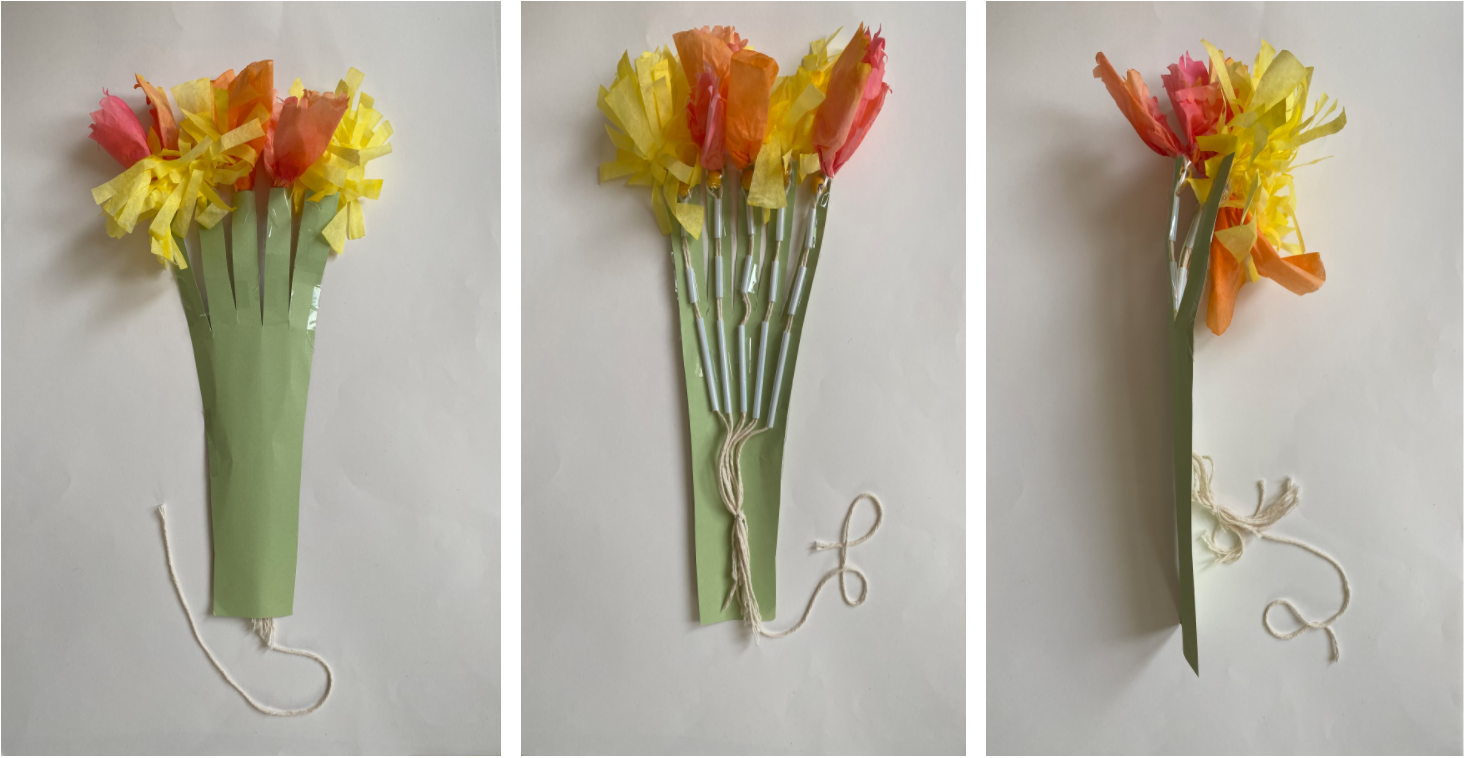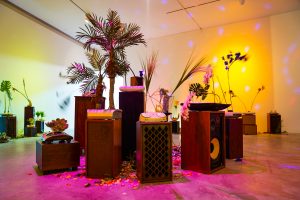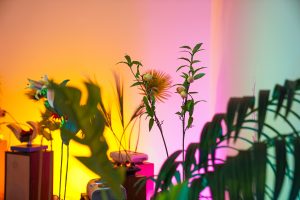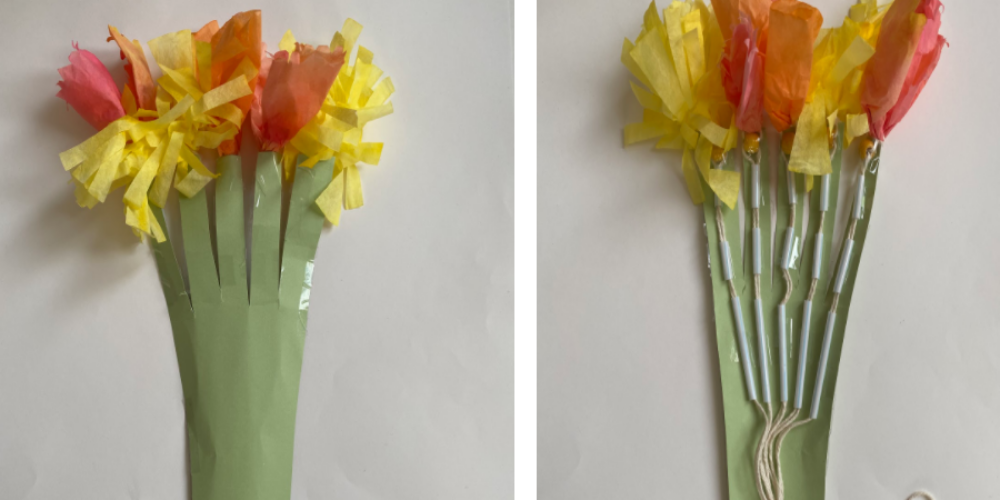The Great Rivers Biennial 2020 artist Rachel Youn created the sculpture installation Gather out of pre-owned materials they found or purchased on internet sites like Craigslist or Facebook Marketplace: electric massagers, plastic plants, old stereo speakers. Youn made these abandoned items into kinetic sculptures—moving objects that whirl, sway, and dance. Youn has created a space with energy and movement, and now it’s your turn to make a kinetic sculpture and create your own moving artworks.

For ages: 8 years–adult
Time it takes: About 60 minutes
What we are going to do:
- Build a kinetic sculpture that moves, using simple materials.
- Experiment with different materials and tools to explore new things about art and design.
You’ll need:
- Tissue paper
- Heavyweight or firm paper
- Medium plastic or wooden beads
- String
- Straws
- Tape
Before we start:
Let’s watch a video or look at the images of Rachel Youn’s installation Gather.


Think about:
- How would you describe the mood of this installation?
- Does the installation remind you of anything?
- What do you think was the artist’s inspiration?
- Can you describe some of the movements the flowers and plants are making, either with words or with your own body?
Art activity
To make tissue paper flowers:
1. Cut 3-inch squares of tissue paper. Layer 3 sheets together.
2. Fold the papers back and forth like an accordion or fan. Once folded, take a stapler and staple in the middle of the tissue paper. Make sure it goes through all the layers.
3. Use scissors to shape the ends of the tissue paper however you like, such as making a curved edge or a triangular end.
4. Fan out the folds and begin to separate the layers. Shape until it looks the way you want.
5. Repeat these steps at least three more times so that you have at least 4 to 5 flowers.
To make the base:
1. Trace your hand onto sturdy paper but do not trace your thumb, and also include a little bit of your wrist. Cut this shape out.
2. Cut the straws into eight one-inch pieces and one two-inch piece (two straw pieces per finger and the larger piece of straw will be in the palm area of the hand).
3. Tape the straws to the finger and palm area. Remember to leave a little space at the top for the bead and tissue flower.
4. Cut four pieces of string at least 12 inches to 15 inches long. Take the tissue flower and loop the string over the staple, having the string hang down evenly on both sides
5. Take the plastic or wooden bead and loop the ends of the string through, weaving the left string to come out towards the right side, and the right string comes out towards the left side. The bead will help keep the flower in place and will keep it from falling through the straw.
6. Guide the two strings through the straw pieces that are attached to the paper. Once you have threaded all the strings through, you may want to put tape on the bead to attach it also to the paper, to make it more sturdy and not so loose.
7. You can now make a knot at the end of each string or a knot can be made with all the strings together but leave some space between the bottoms of the straws and the knot made to the end of the string.
8. Pull on the end and the flowers will move. Have fun making the flowers dance.
Terms:
- Kinetic sculpture
- Installation art
- Organic Shapes
- Geometric Shapes
Flower Power is inspired by Rachel Youn: Gather, Great Rivers Biennial 2020.
